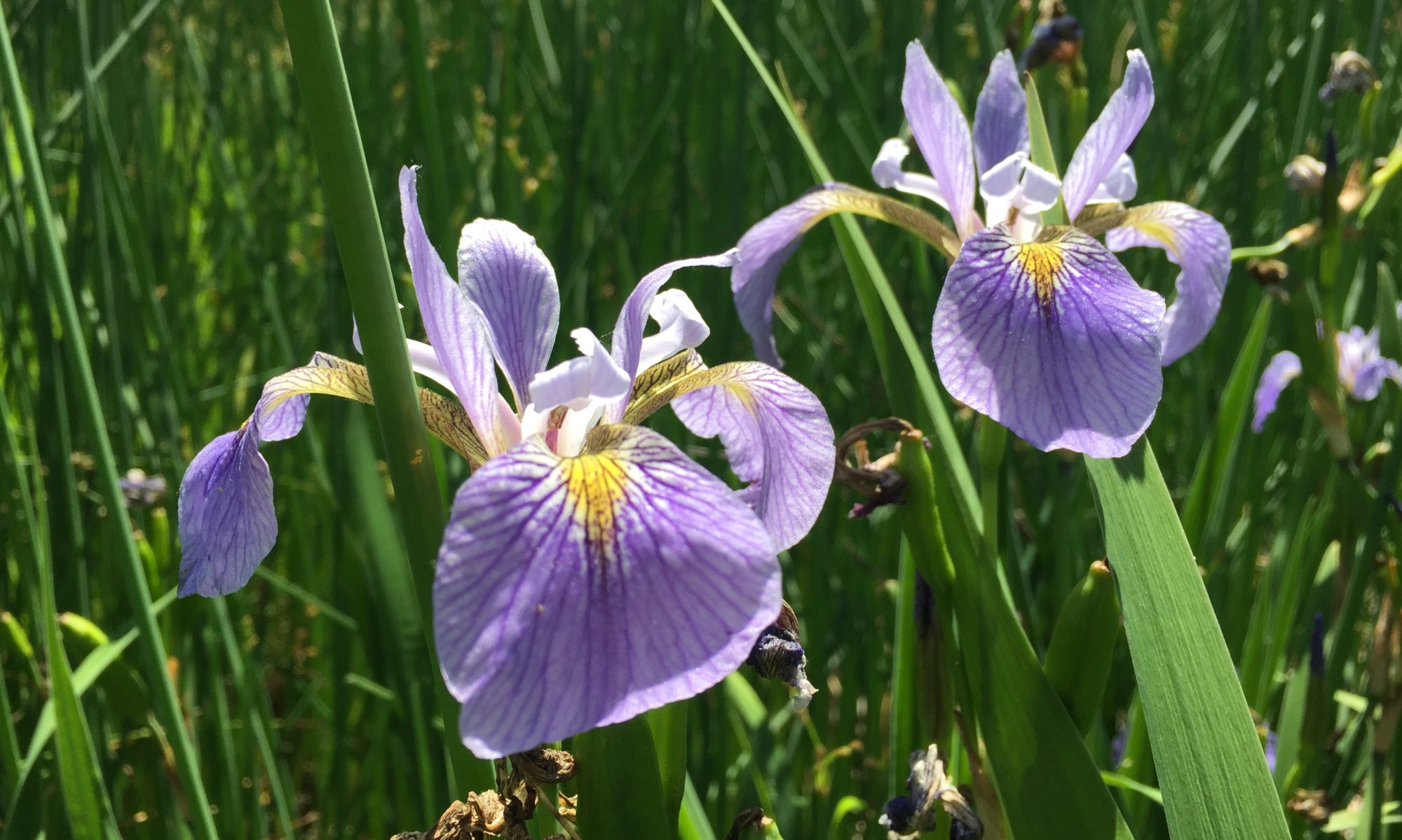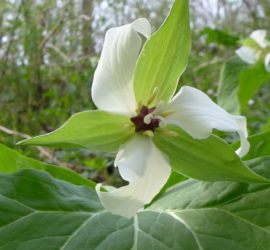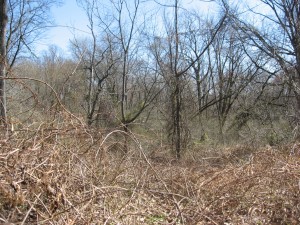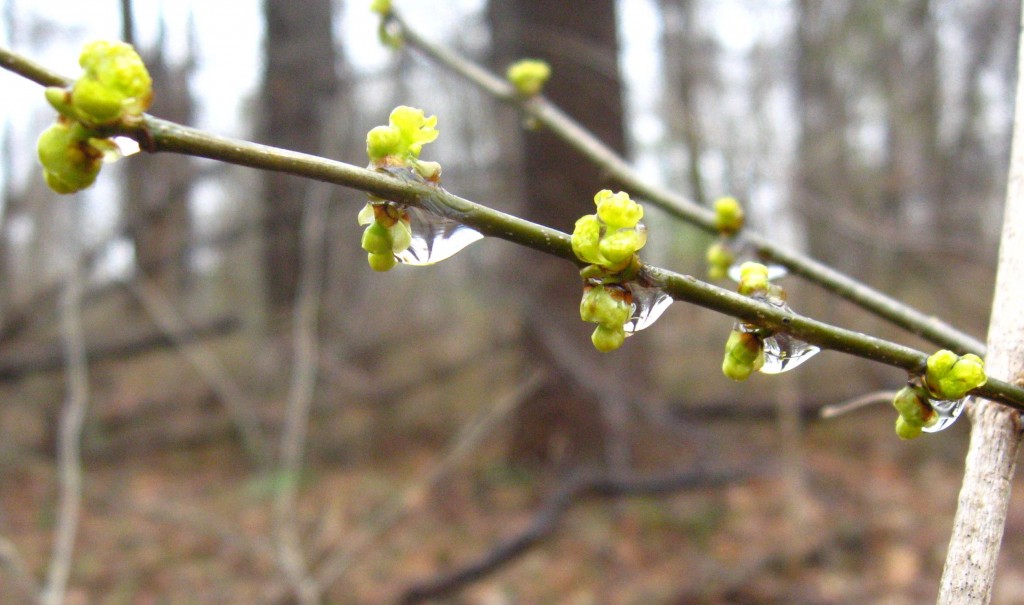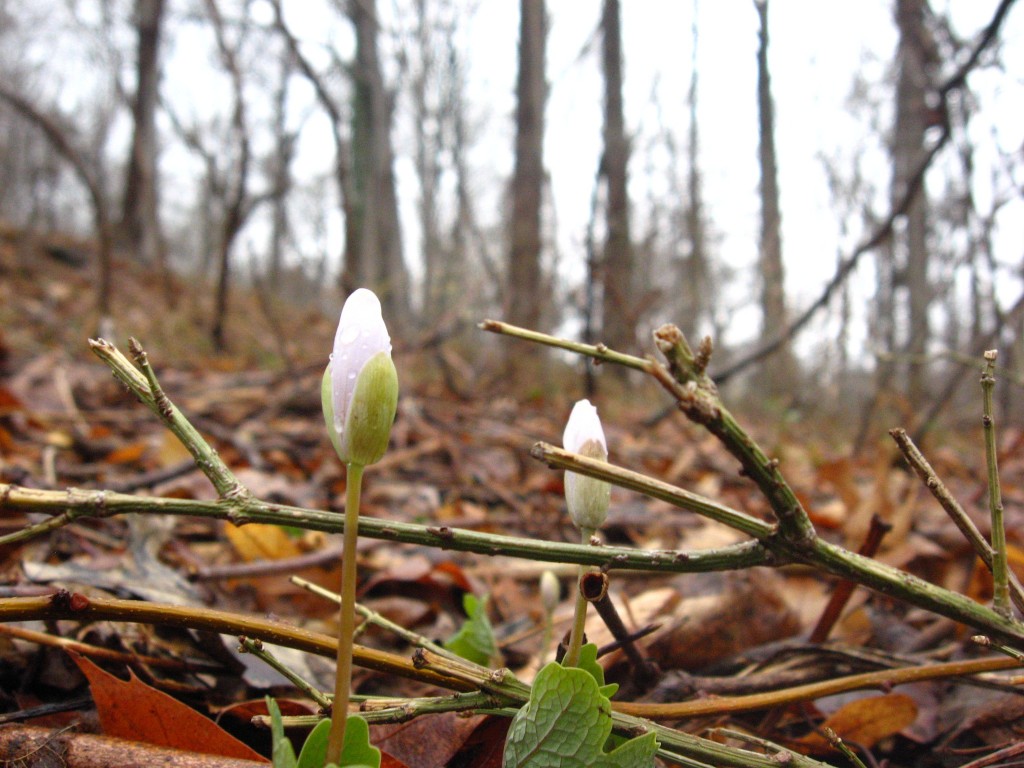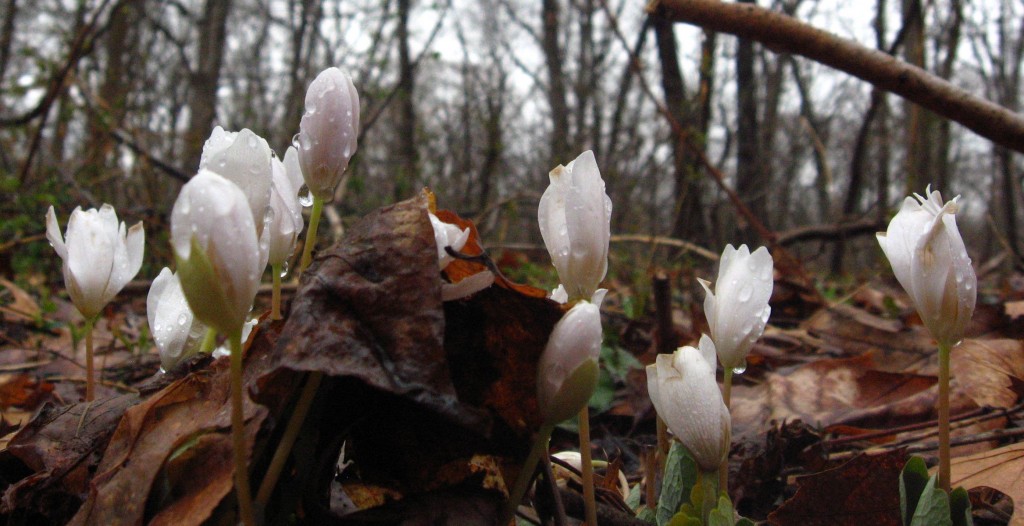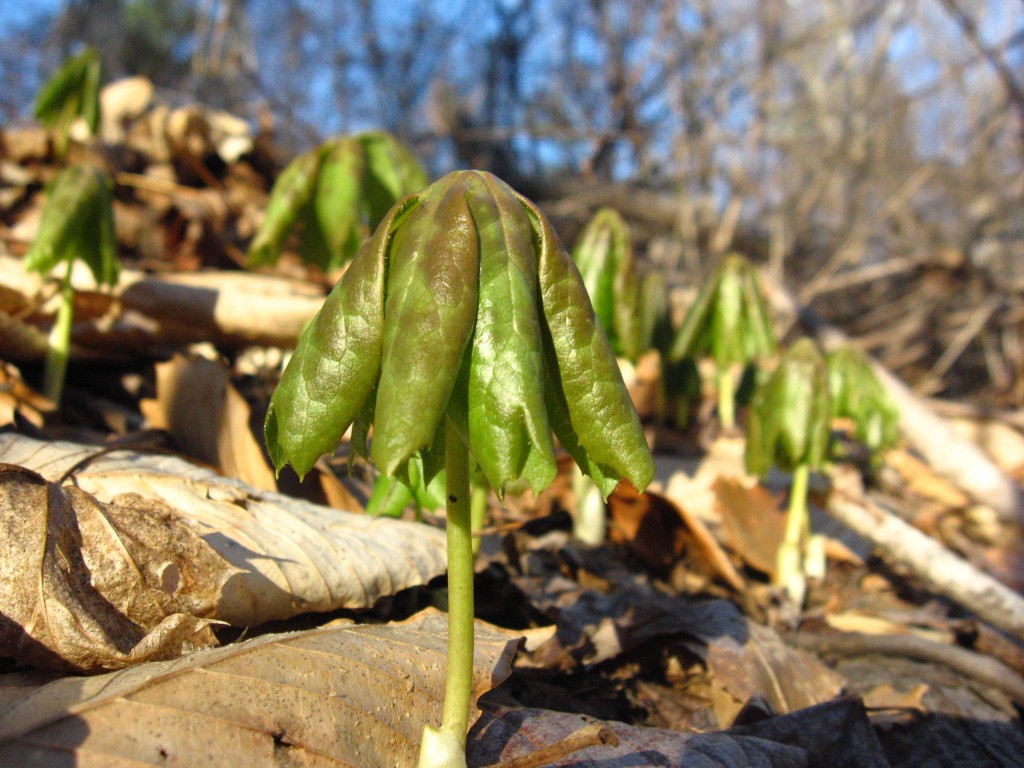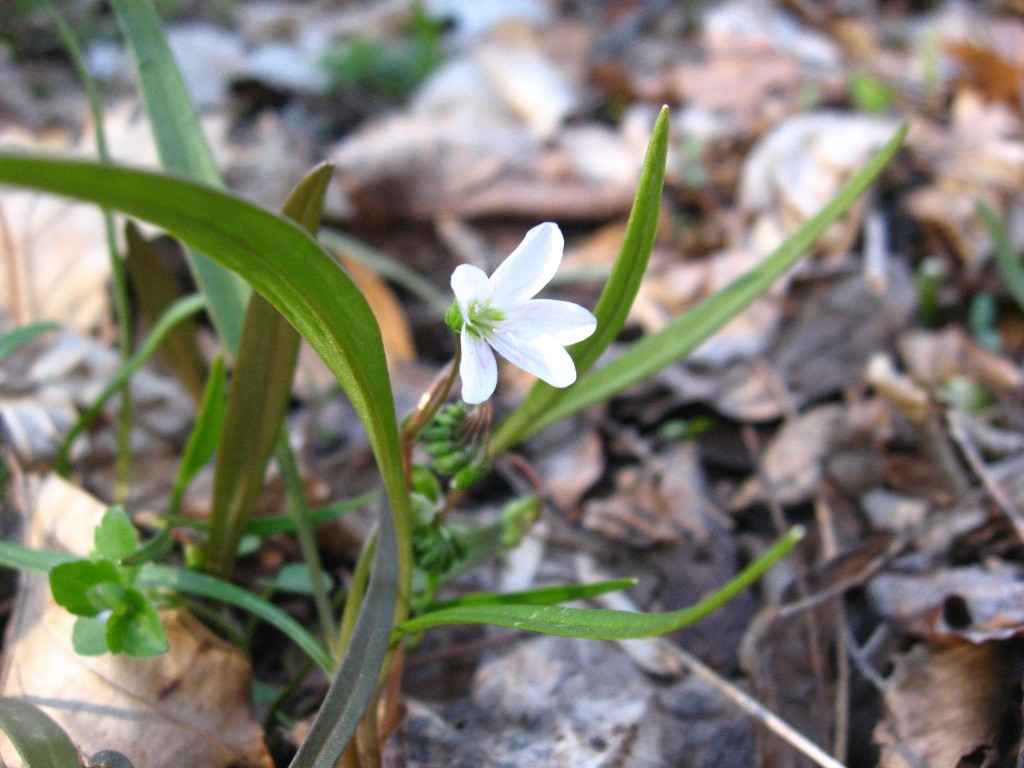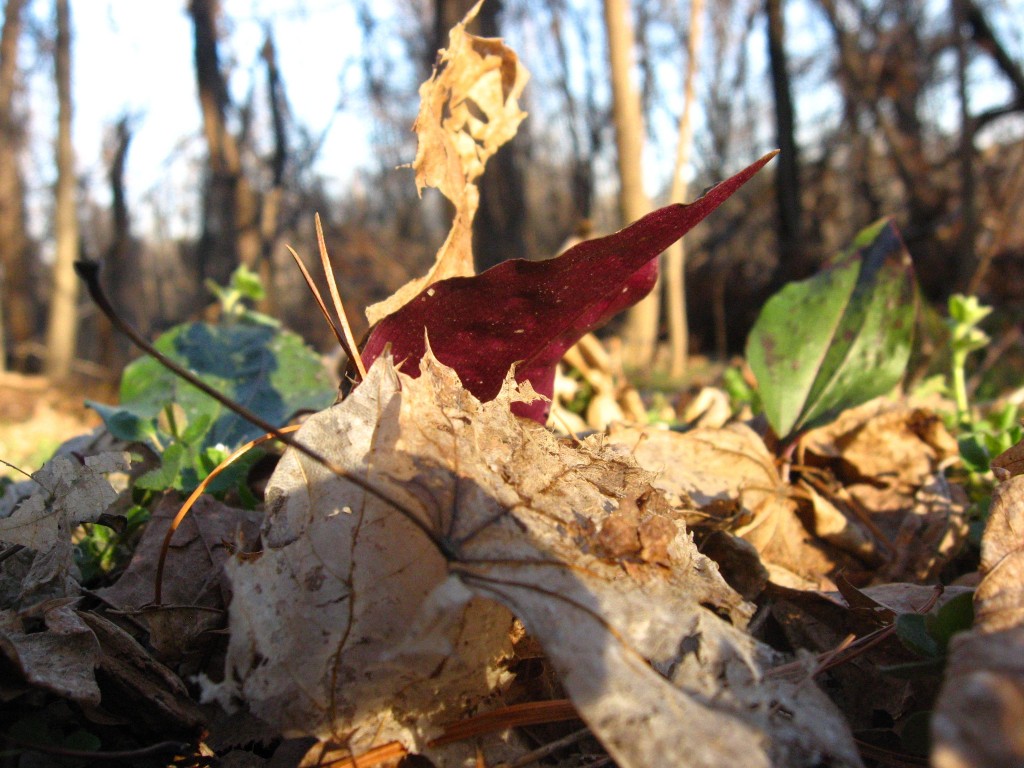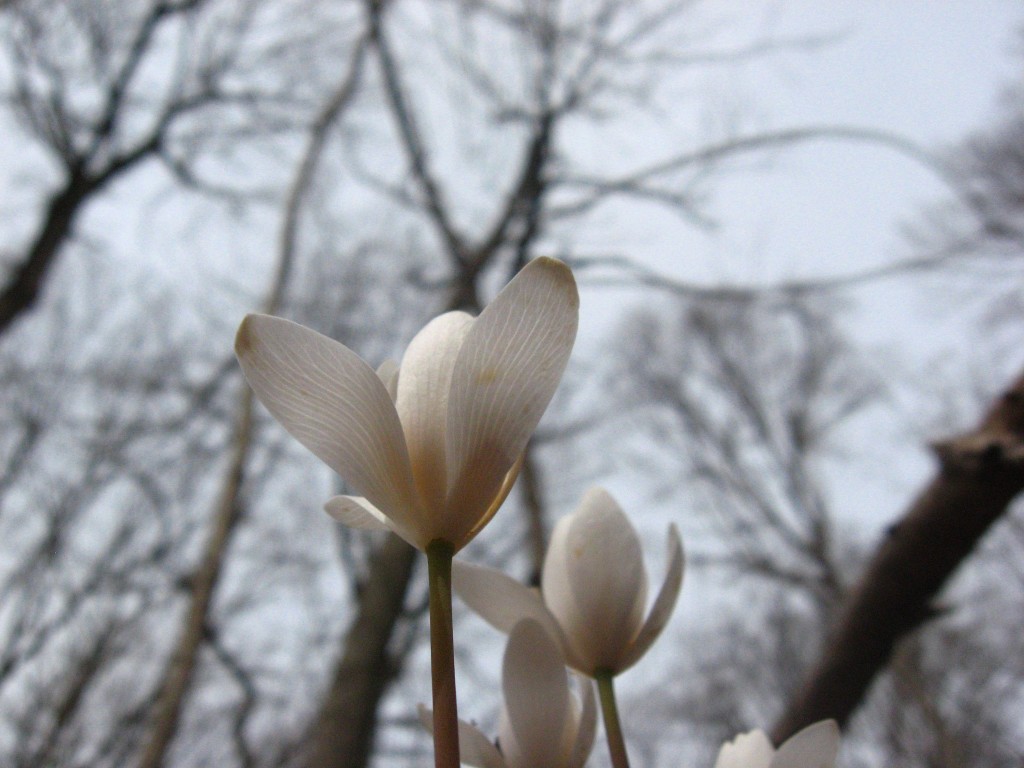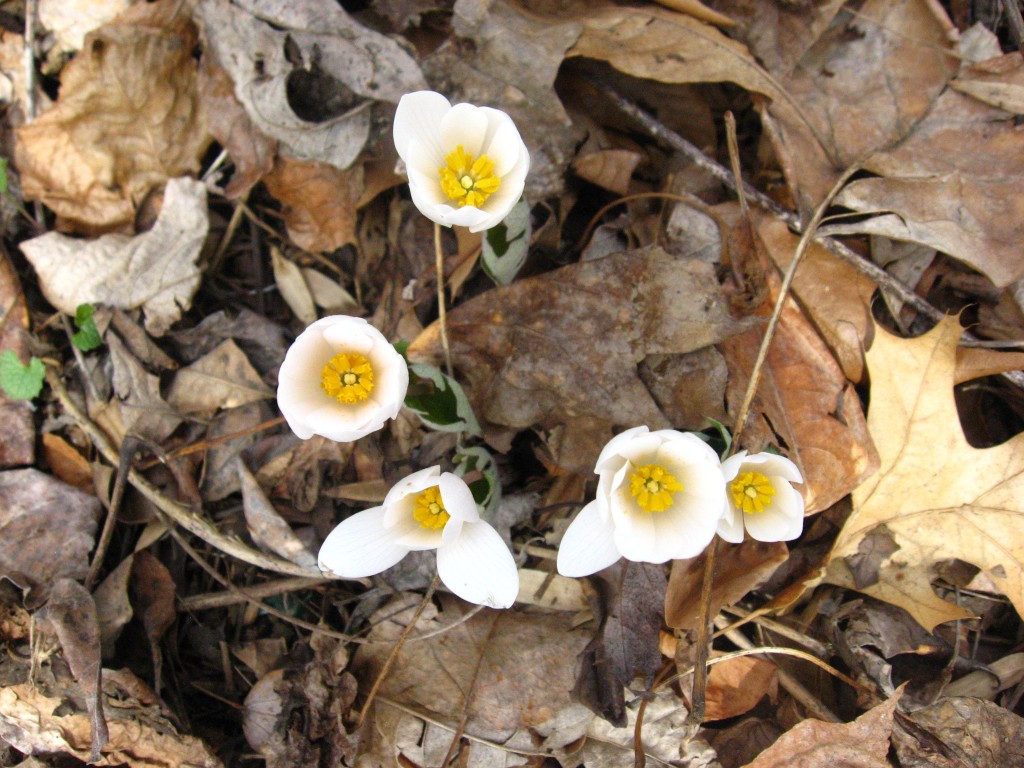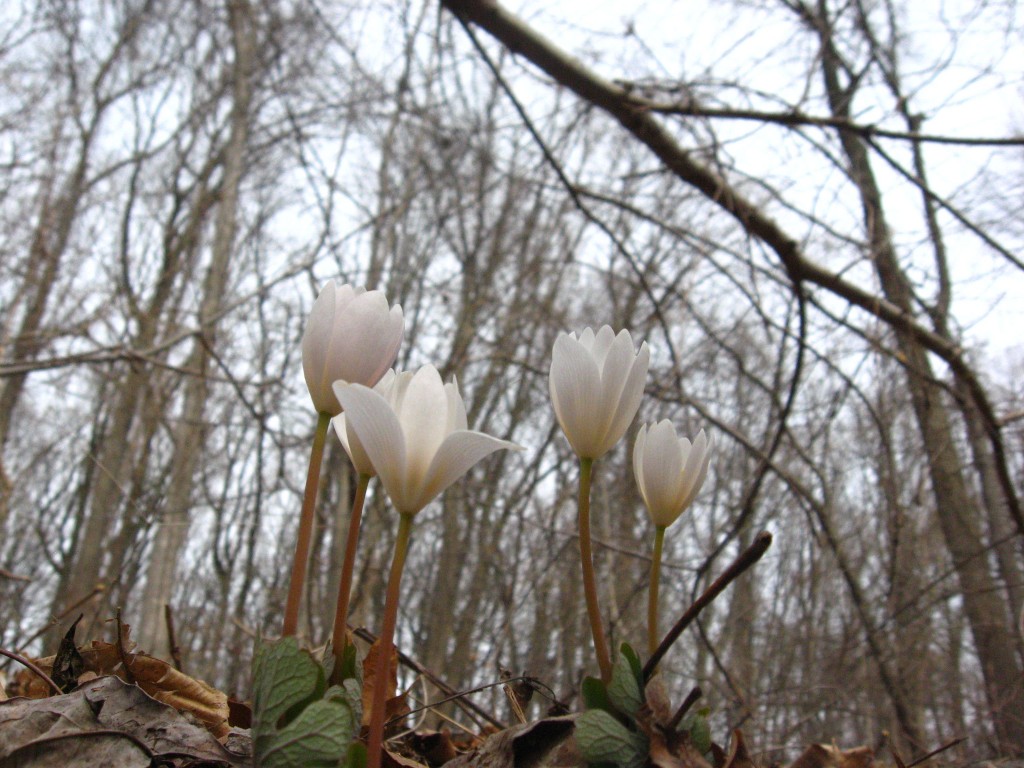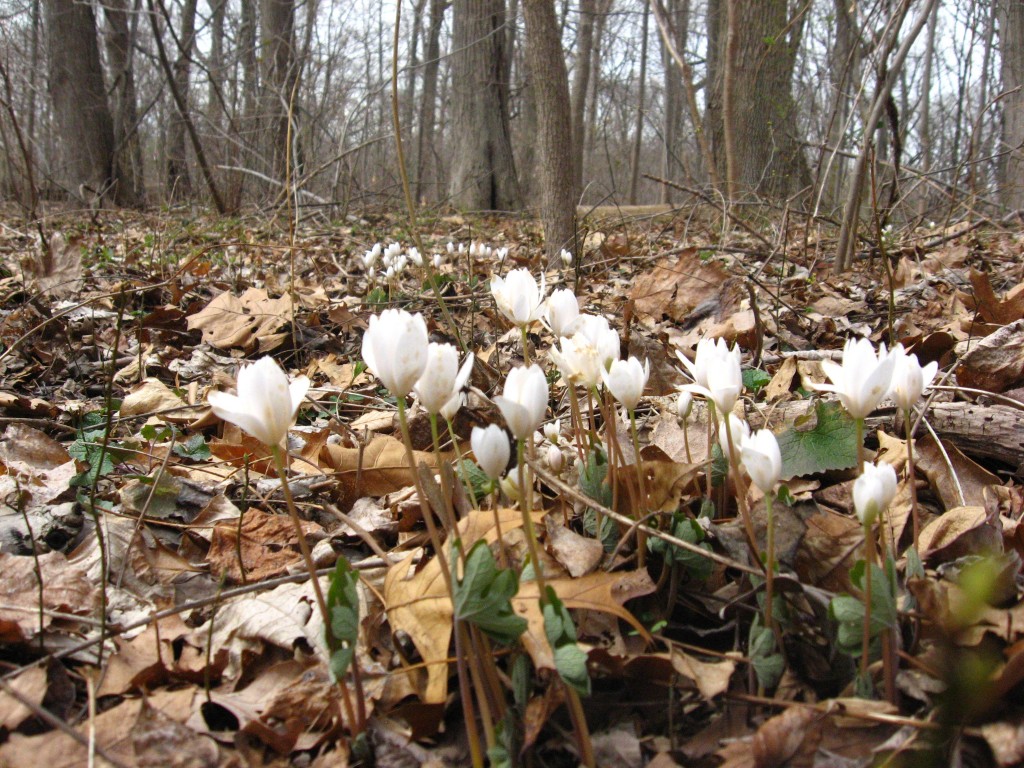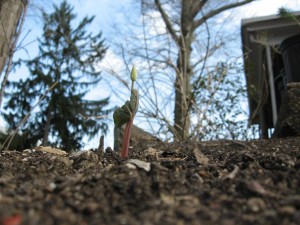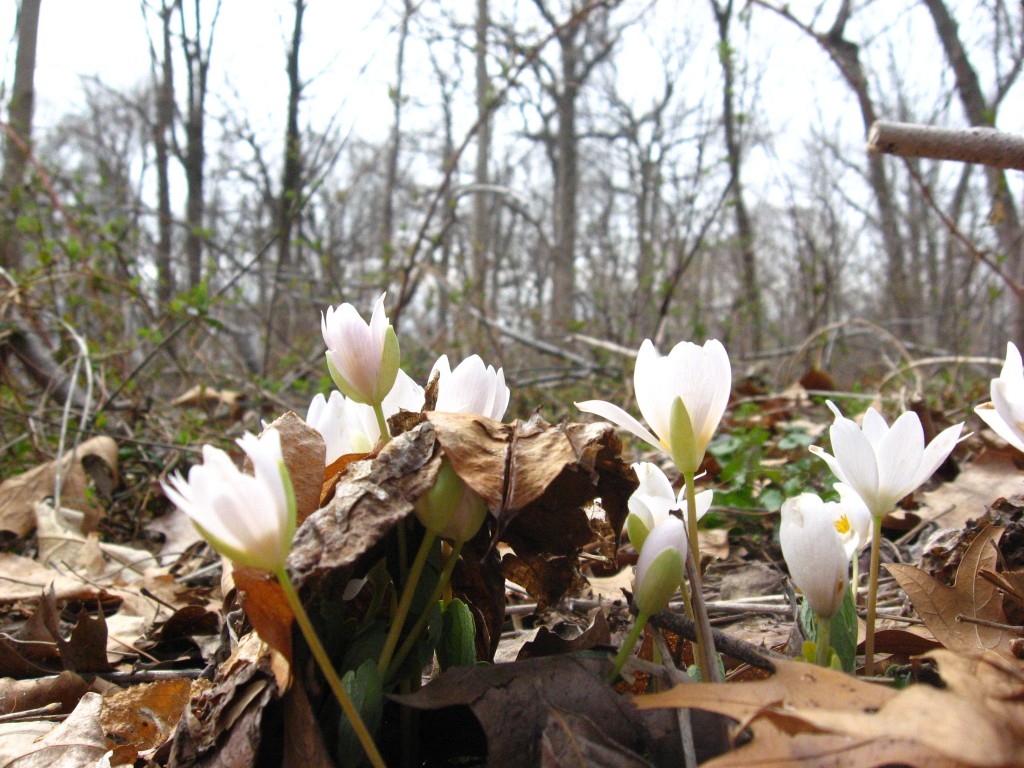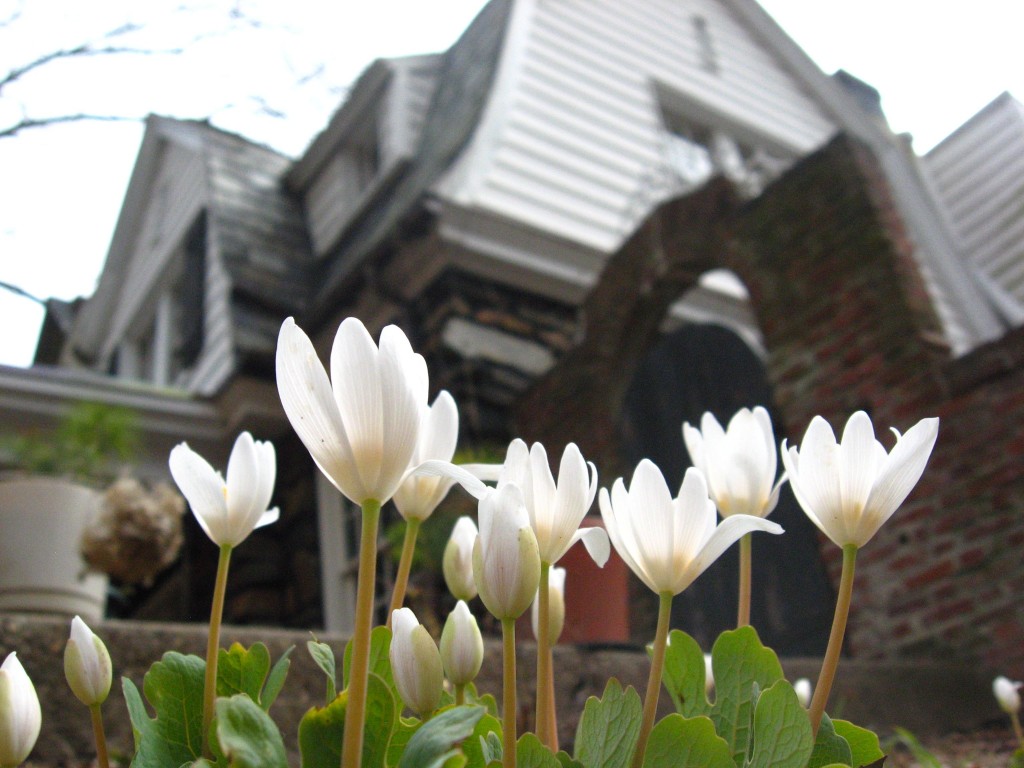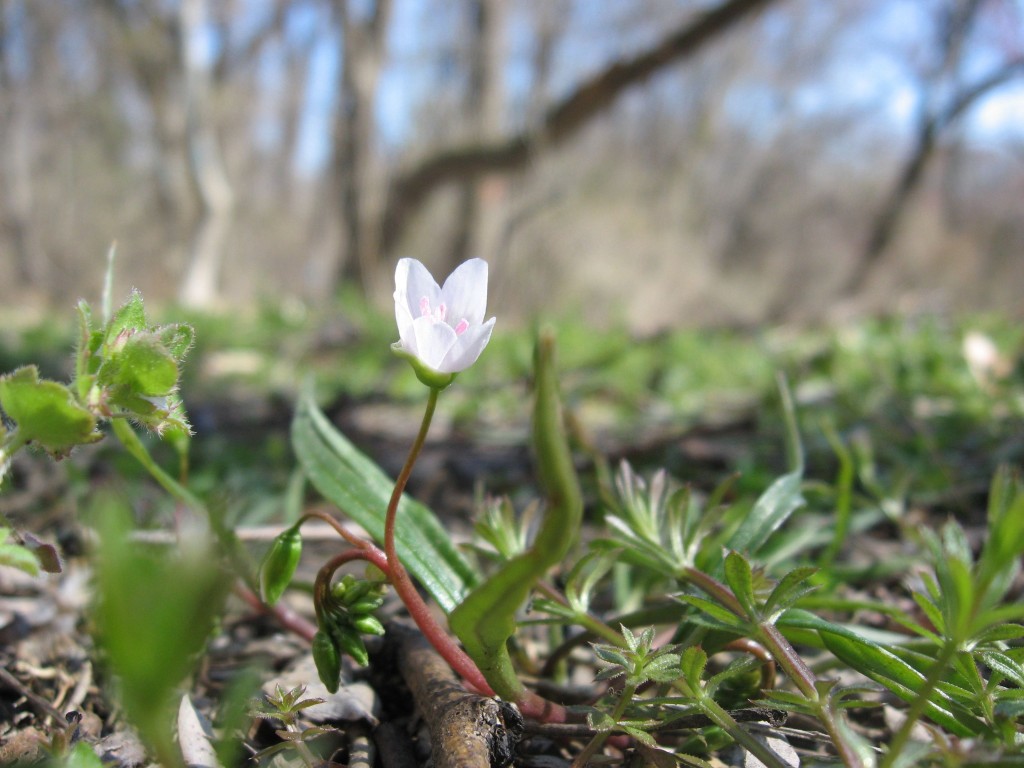
- SANGUINE ROOT VISITS BOCCE COURT WOODS SECTION OF COBBS CREEK PARK, NOT ONE MILE SOUTH OF MORRIS PARK. IT’S GOOD TO KNOW YOUR NEIGHBORS.
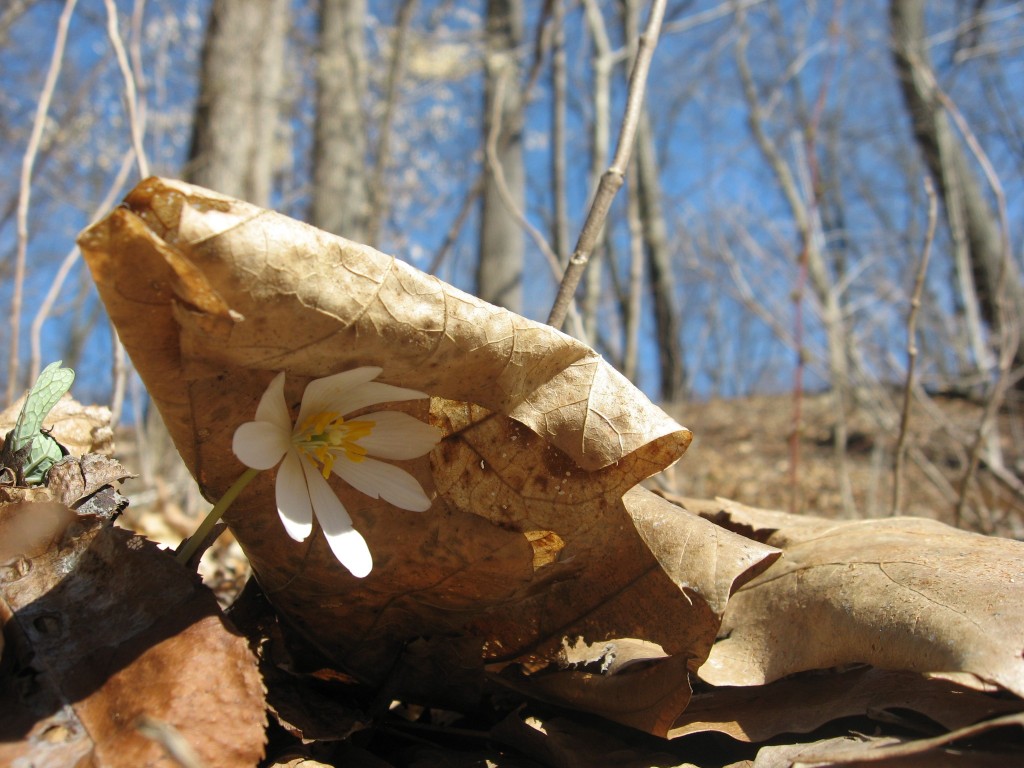
The Sanguine Root staff is very interested in what blooms where and when.  This way we can learn more about the plants in Morris Park, and their relationship to the rest of the world. Last summer we saw a large patch of bloodroot growing along the trail in The Bocce woods of Cobbs Creek Park.  This area of  high-quality woods is about one mile south of Morris Park and is a bit lower in elevation.  At this time of year, elevation means alot in terms of blooming spring ephemeral flowers and development of buds on trees.  The subtleties of location become important and it makes where we live and the immediate environs that much more interesting. The Bocce woods area, our immediate neighbor to the south is teaching us more about Morris park than we had imagined. A comparative perspective allows us to begin to understand why certain plants and trees grow in certain locations and bloom at different times.  We read about such plants as the Red maple or the Bloodroot, the Sycamore tree or the Spicebush, but to witness them in wild, in varying locations, in the field, is the best education. In the past month, we have seen quite a dramatic landscape of species in many different locations, and the effect on us is stunning- Mayapples reaching maturity  in Florida and Bloodroot that has already begun seed production in the first week of March is an enlightening experience. Now we are interested in the differences of environments and ecosystems of Fairmount Park here in Philadelphia. Even a mile apart is a world of difference!
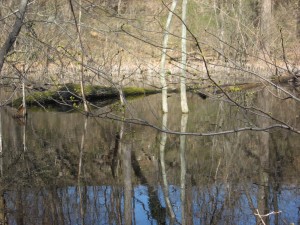
Claytonia virginica
We were pleasantly surprised to find Claytonia virginica (Spring Beauty) blooming at this time. Yet just one mile south of Morris Park, there it was!  We dont expect to find this one for a few weeks yet!  It must be noted that the area that it is blooming is especially sunny, because this is an area of total canopy failure.  The invasive vegetation had completely overtaken any  young trees that were trying to re-forest this location and destroyed them.  In the late 1990s, Fairmount Park created the Master Plan and this area was targeted for restoration and given a high priority status. Since then, the invasives have been eradicated, and forest trees have been replanted.  We found specimens of White Oak, Dogwood and Redbud planted in a vast field that is on its way to being re-forested.  Many native trees were  noted, marked and spared from the eradication process and thrive in the area. We saw plenty of Black Cherry, Sycamore, Red Maple, Spicebush, Silver maple, and Oak that were carefully marked and left alone in this very comprehensive program of Urban Environmental Restoration.  All of thee trees provide a significant amount of contributions to the native ecosystem as a whole. From the Spicebush swallowtail butterfly whose larval stage is completely dependent on this native shrub, to the over 4o0 species of insects and birds that include oak trees in their survival strategy, the efforts of environmental restoration in the Bocce Woods section of Cobbs Creek Park deserve special mention- efforts like this are the blueprint for future of degraded urban forests.  This area was the most challenging. A severely degraded urban forest, that has lost most of its canopy, adjacent to a minimally disturbed forest with a healthy variety of trees that must be protected from further disturbance.
The blooming Spring beauties, a beautiful native spring ephemeral wildflower, tell us this story  just by blooming in the sun of March 26, in Cobbs  Creek Park. In  an area of intense degradation, where a serious effort has been made to reverse this situation and to restore the original forest.  Right in the middle of this, the native wildflower, Claytonia virginica blooms.
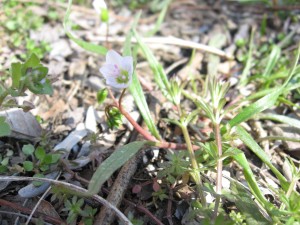
The Sanguine Root is very impressed by the amount of care and effort made to restore the area around the pond of the Bocce Woods. Â We decided to visit the pond and appreciate its beauty.
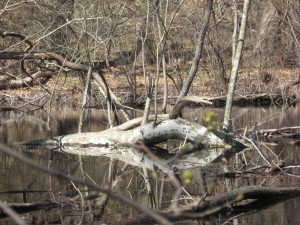
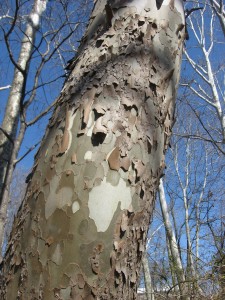
We were enchanted by the beautiful stand of sycamores in the late march afternoon sun, a colony of trees that is an indicator of a wetland, stream, creek, river , pond and lake. Â These trees are very comfortable with water, standing water, flooding conditions, or even in just very most soils, this tree is to be found. The stand of trees rose out of the area in a striking pose, indicating the wetland beneath them. Â We were riveted by the arrangement of the trees and began our descent into the wetland area. We knew that there was this seasonal pond there and we had seen its dried up state last summer in 2010, and now, in late March ’11, we could see the whole pond from a distance.
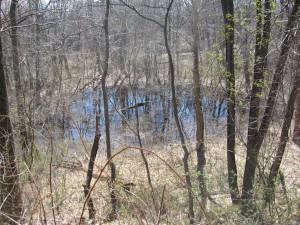
It was exciting to see the real pond, actually there. We knew of it from the Fairmount Park Master Plan but had never seen it before. Â To reach the water was a challenging adventure through mats of Japanese honeysuckle climbing up spice bush. Â We thought to ourselves that if we were ever done with the work in Morris Park we would love to put our restoration efforts in this area, which has such great potential. Â Even if we could spend a day here, we could do so much. Â The travail through the thickets was worth it. Â The pond was mesmerizing. Â The reflection of the sycamores in the water was magical. Â One sycamore had fallen into the water, and created a beautiful island.
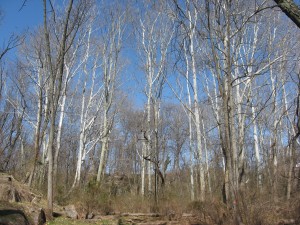

Acer rubrum
Late March here in Philly, the Red maple is in full bloom. The beautiful red haze can be seen in the woods, usually in moist areas, lowland spots near the rivers or along the tributaries. Â The rich red color is not to be underestimated. A view of the whole tree in bloom is a scene of grandeur.

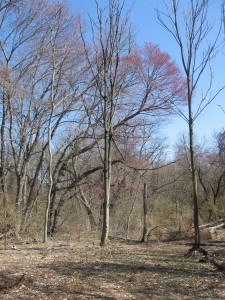
This older specimen of Red maple in bloom gives a suggestion of its growth habit in the wild. the two trees in the foreground are Ailanthus altissima, an invasive exotic tree. They appear to have been part of the invasive control program, and show signs of having been treated with a basal bark herbicide.
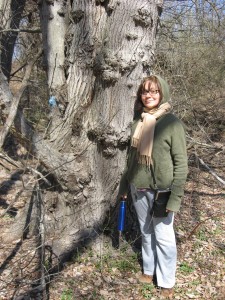
We could find last years leaves underneath the tree.
- Canopy failure, Bocce Woods, Cobbs Creek Park, West Philadelphia
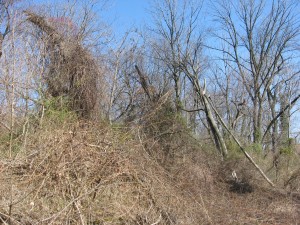
Here is a total mess of Multi-flora rose, Japanese honeysuckle, Asiatic bittersweet, running rampant over a forest trying to regenerate from previous sequences of disturbance. Â Only a serious human intervention will restore the forest at this point, which is what is happening just to the north of this site.
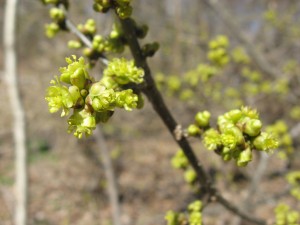
Back to focusing on the beauty of Cobbs Creek park, we are very pleased with the blooming Spicebush (Lindera benzoin).
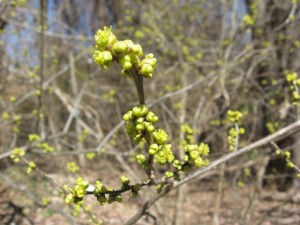

Lindera Benzoin
Far below the haze of red blooming Acer rubrum, is the yellow haze of the understory shrub Lindera benzoin, our most common native shrub in Cobbs Creek Park, Morris Park and in West Fairmount Park. Â The Spicebush blooms are a spectacular sight, and they create a beautiful yellow in the understory of the woods in late March and early April. The bright yellow flowers contrast nicely with the dark bark of this stately shrub. Finding these yellow flowers in the late winter and early Spring woodland is an experience not to be missed. This is the time of the red and yellow haze in the early spring forest.
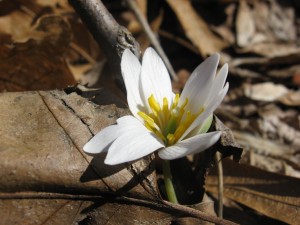
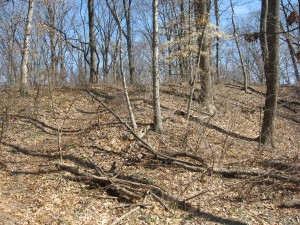
This section of the Bocce Woods is the best part. It is a woodland area on a hillside that has not been highly disturbed, and has the diversity of trees that can maintain a forest canopy, and host a healthy shrub layer, as well as an understory tree layer. Â We found Redbud (Cercis canadensis) in this forest. Â While not absolutely sure, we think these specimens we found are original to the woodland. Â We did not see them any where else in the area except in this mature wooded site. Â This is an area that is unique in its undisturbed condition, and all of the efforts being made to protect it are worthwhile and necessary.

We made our way towards Cobbs Creek after admiring the magnificent stand of Bloodroot.  Cobbs Creek is a beautiful feature of drainage under siege of the urban landscape.  The dams that the authors of the Fairmount Park Master Plan recommended be removed are still in place, and the invasive vegetation has not yet been controlled or eradicated.  Most striking is the invasive Ranunculus ficaria,  Lesser celandine, which has completely covered the area around the creek, crowding out the native plants.  Also, we saw the old canes and the young shoots of  Japanese Knotweed, also a problematic invasive, recommended by the Master Plan for control. Visiting this area of Cobbs Creek Park surely is a roller coaster of sights and problems.  One minute we are wowed by the beauty of the undisturbed woods, horrified by the conditions surrounding this forest, and again, wowed by the efforts to reverse the degradation of this important forest.
The Bocce woods of the Cobbs Creek Park must be preserved and saved. For the good of all citizens of Philadelphia, as well as the integrity of the natural landscape of the area, this special forest tract contributes to the ecosystem and watershed of the Delaware river, the Darby Creek watershed, Cobbs Creek Park and West Philadelphia.
This site must be protected. All of our efforts to restore a small section of Morris Park, just one mile north and upstream of the Bocce woods are meant to be complementary.  Seeds from invasive plants we eradicate will not be washed downstream. Our removal of invasive species in Morris Park will allow native plants to grow and thrive, which will allow native species of insects and birds that can only survive with native plants, to live and thrive.  The seeds of these native plants will be carried  by water, wind and bird, eventually from Morris Park, one mile south to the Bocce Woods of Cobbs Creek Park, we hope and imagine.
